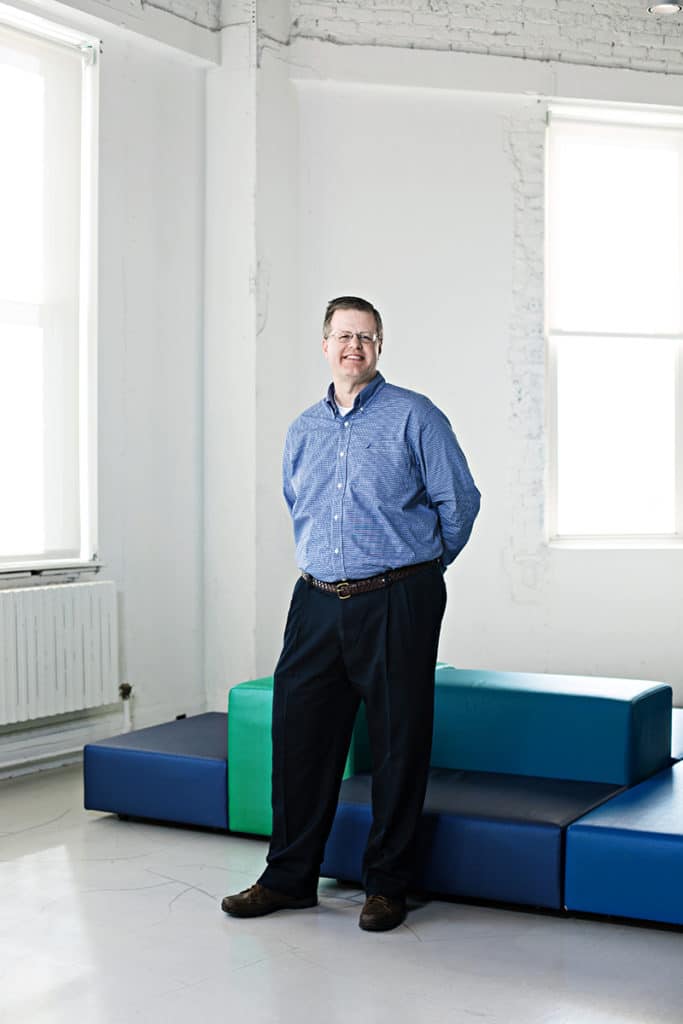Motorola is one of those brands that nearly everyone associates with a specific category of products: quality electronics. That brand recognition in itself is a salable commodity. But what many people might not know is that Motorola licenses its brand to select third parties for certain product classes. This allows the company to boost income without taking on the task of manufacturing and supporting the products.
One major legal challenge is to strike licensing agreements that are mutually advantageous for the electronics giant and its partners. This means ensuring that the products and customer service practices meet and maintain Motorola’s quality standards. At the same time, it allows third-party manufacturers enough latitude to make a desirable profit.
Motorola’s point person for this aspect of the business is David Carroll, legal head of trademarks, brand and advertising. Carroll is responsible for not only the legal details of contracts and ensuring compliance of their terms, but all other aspects of an international portfolio of more than 7,500 trademarks. His duties include negotiating and drafting licensing terms, overseeing product co-development, and devising co-branding agreements.
Carroll also oversees management of legal advertising review and counsels marketing professionals on all aspects of advertising and marketing law, including FTC regulations, unfair and deceptive trade practice statutes, and false advertising laws. Add to that the advising of clients on global business and marketing brand strategies, and it becomes clear that his work goes well beyond traditional legal boundaries, carrying over into the operations and strategy of the business as well.
Carroll says he acquired these responsibilities by stepping up to fill a void that had no clear champion. No one had seized ownership of the trademark licensing program, a function that he believed Motorola could better exploit. It was natural for Carroll to rise to the challenge, given his passion for the practice of branding and brand reputation.
To illustrate this, he brings up the LOGO Board Game, which his organization sometimes plays as a team-building exercise. When playing the game, players have to identify symbols with brands. “I always win,” Carroll laughs.
DID YOU KNOW?
Motorola’s major recycling initiatives even include the packaging itself, as the company uses FSC-certified paper, water-based adhesives, and soy/vegetable-based inks.
Motorola’s trademark licensing efforts began about fifteen years ago when the company was preparing to exit the consumer two-way radio business. The growing ubiquity of cell phones was cutting into the product’s sales and would no longer fit into the company’s strategy. There was, however, still some demand for the radios, and licensing was a way for the company to disengage from the business of making and supporting. At the same time, it allowed Motorola to continue to reap income via royalties. In other words, third parties benefit from the marketing advantage associated with the Motorola name.
This successful deal set a precedent for others, and the company ramped up the program for third-party collaborations—gradually at first. Many of the licensed product categories are in “less than exciting businesses,” Carroll says. They may be products that had great promise at one time, but current sales don’t live up to past expectations. Or, there could be instances where one technology overtakes another, such as when tablet computers knocked cordless electronic picture frames off the map. Popular for a brief period, the latter “tanked almost overnight” after consumers found that they could easily set up slide shows of their photos on iPads, Carroll explains. In other cases, some products have a more gradual sunset where there is still money to be made for a few years—perhaps longer.
Other products such as baby monitors may not be top sellers, but they relate to Motorola’s technology, and can bolster its brand just by having another product appear in consumers’ homes. These “halo products” have marketing benefits even if they don’t contribute major profits. Over the years, this angle has become more important to the company.
“There’s a desire to use trademark licensing more strategically to help build the Motorola brand,” Carroll says.

Carroll’s most vital responsibility is to zealously guard Motorola’s brand reputation. Any product with the Motorola name on it that fails to uphold quality standards would harm the brand.
“First, you have to pick a good licensee,” he says. In many cases, the chosen partner is one that the company knows through past OEM relationships, or has a stellar reputation in the electronics industry.
Then, the company tours and reviews the potential partner’s factories. Following an examination of the prospective licensee’s current products, Motorola reviews product concepts for the category under consideration. Finally, the prospective partner delivers a product prototype that Motorola tests. The manufacturer might be asked to make revisions to improve the product. When licensing agreements are finalized, they include rules on brand use, from how the products are packaged to how the marketing materials should look.
Another important aspect of Carroll’s job is to stay abreast of the rapidly changing consumer electronics ecosystem. Not only does he need to be aware of developing new categories, but also of instances where products merge. For example, some manufacturers have added new features to their two-way radios, including weather channel receivers and cameras. In order to maximize profits from licensing, Motorola’s trademark agreements contain strict boundaries on product categories.
The original licensing agreement for two-way radios did not anticipate new weather channel and camera features. However, the licensee had to quickly add them to keep pace with the competition. As a result, Motorola has to be willing and able to adjust its trademark agreements—typically with five-year terms—to meet the needs of licensees. Otherwise, the licensee may just drop the product.
Given the numerous possibilities for product overlap, “our biggest challenge is defining the categories,” Carroll says. His role includes interacting with engineers and product specialists from across the company, and this helps him stay current with market trends that might impact licensing contracts. He has also discovered that attending CES, the annual Consumer Electronics trade show, provides a wealth of valuable information.
While law is his profession, Carroll contributes much more to Motorola. And he couldn’t be happier. After all, how many lawyers get to consistently pursue a passion in the course of their day-to-day activities?


